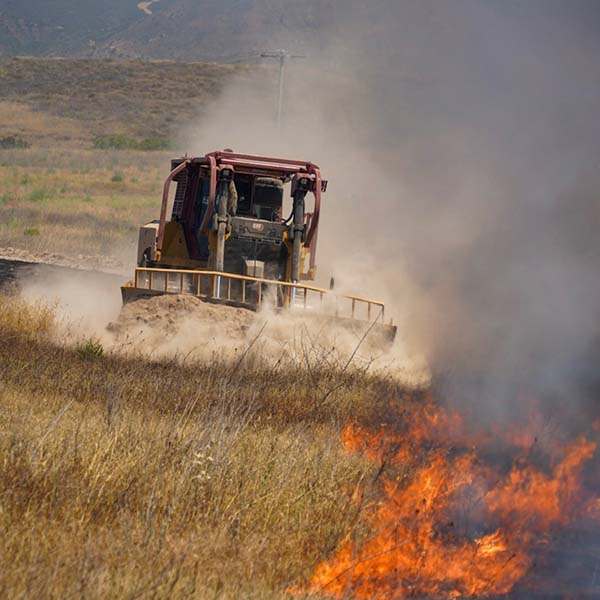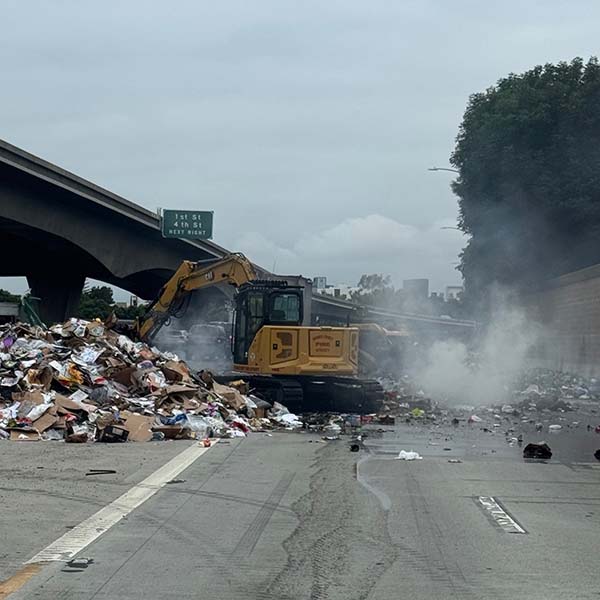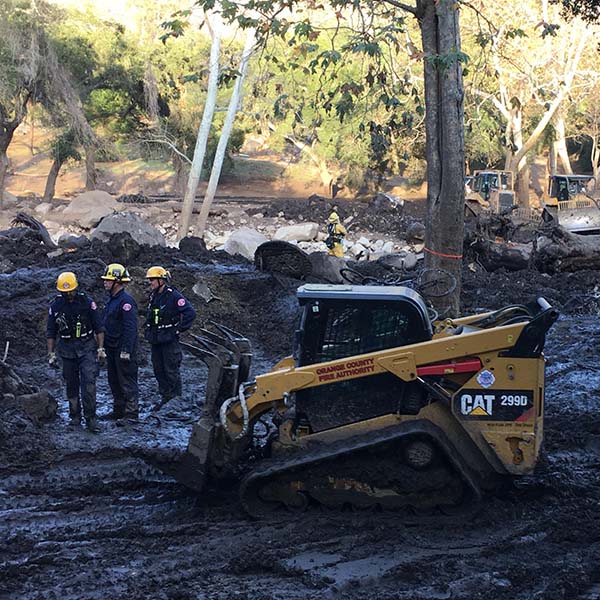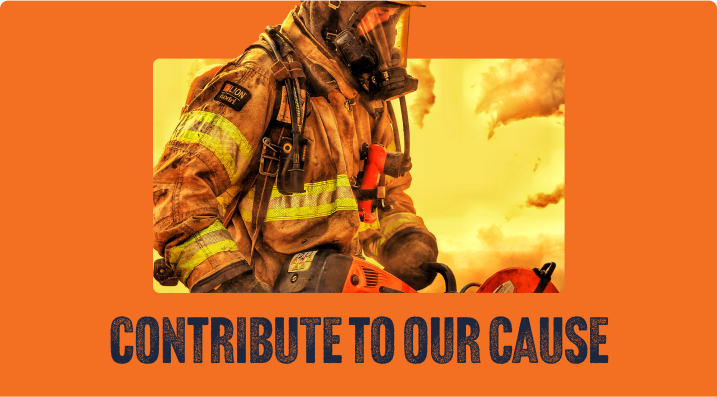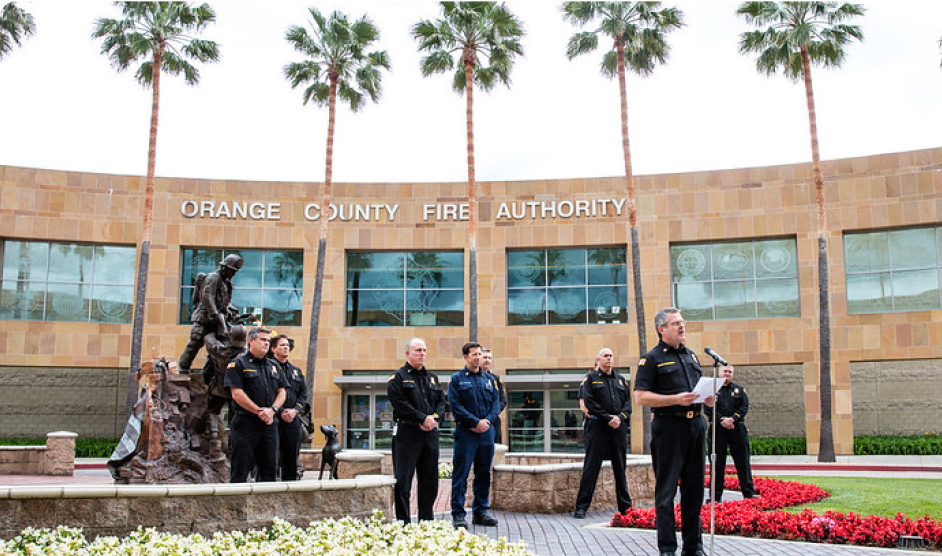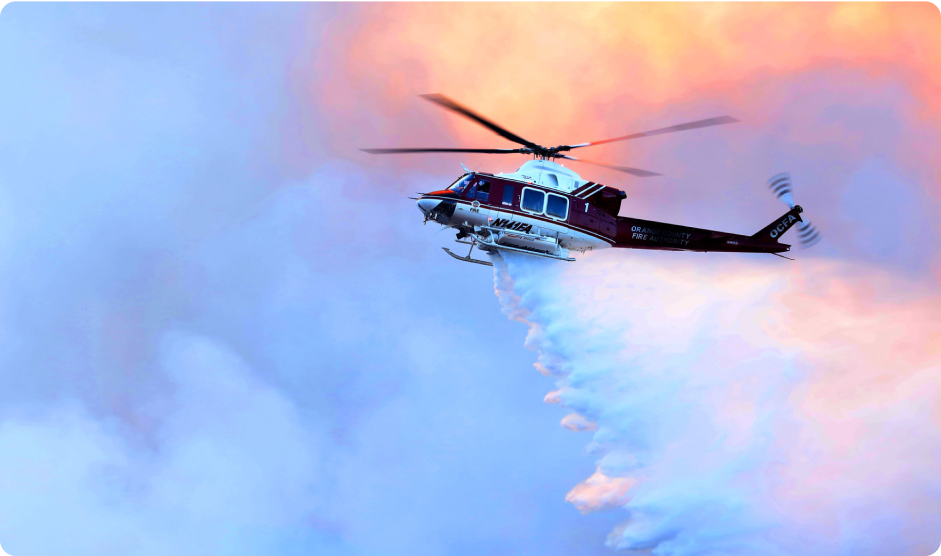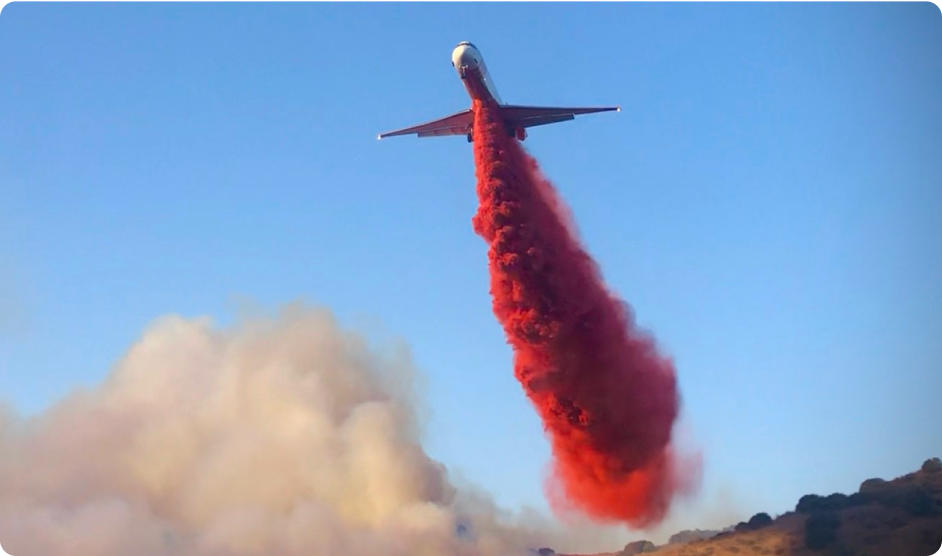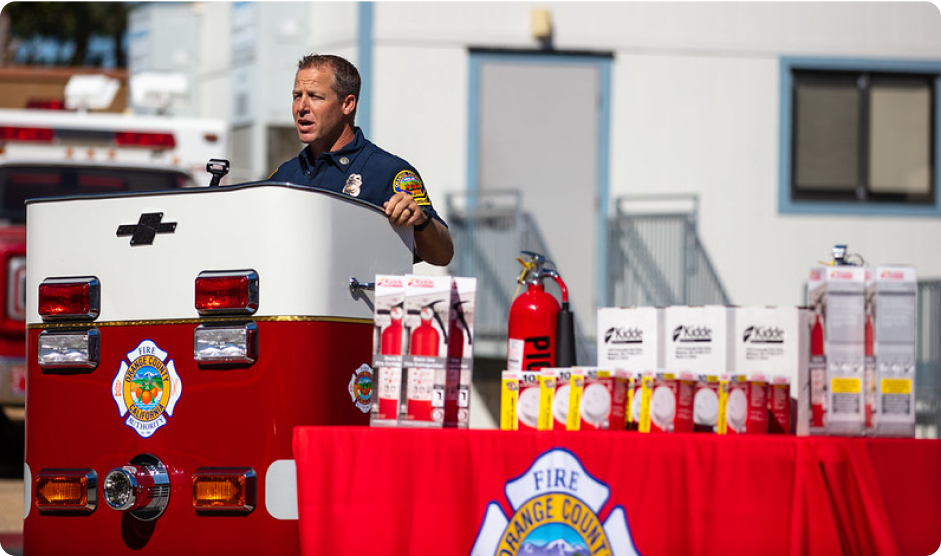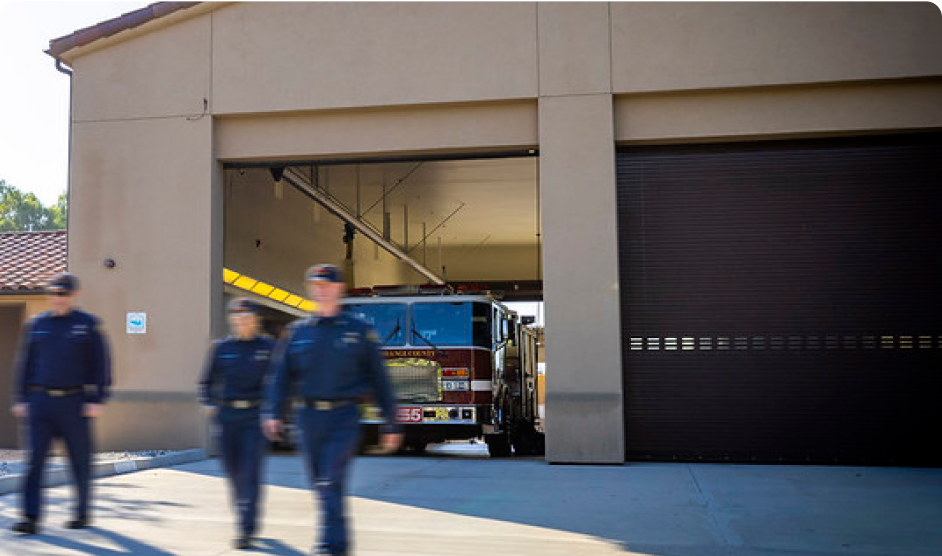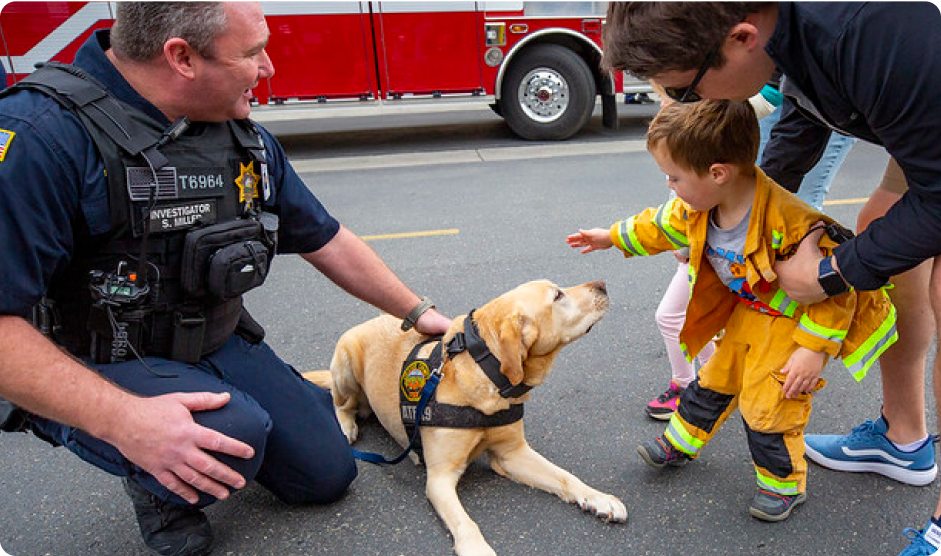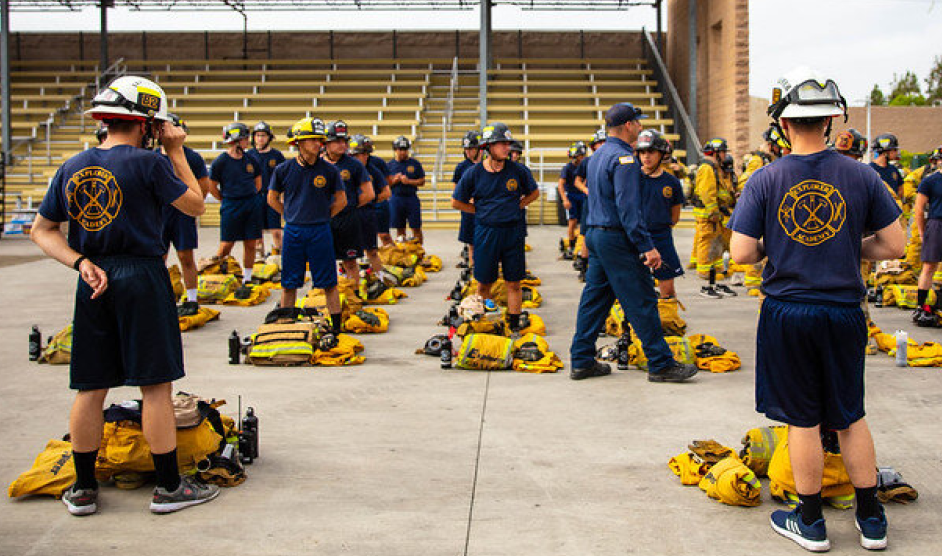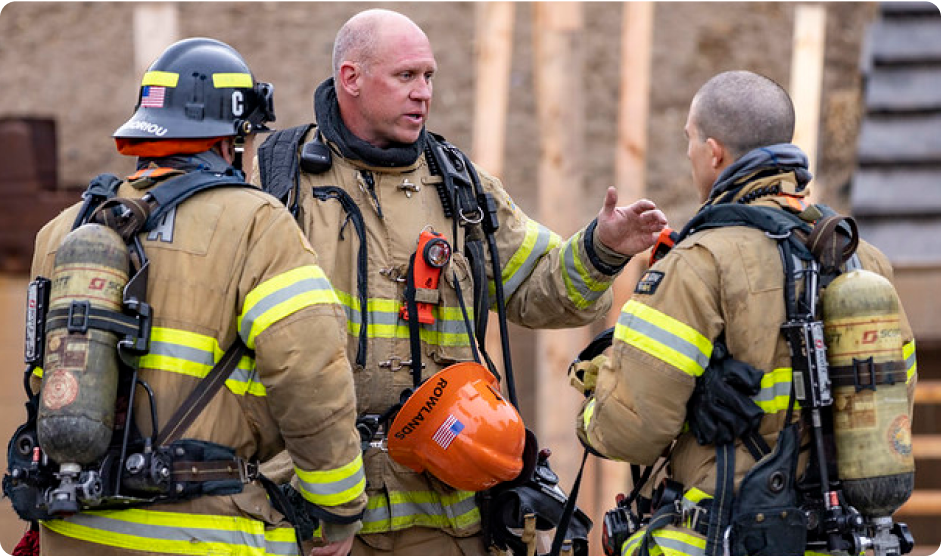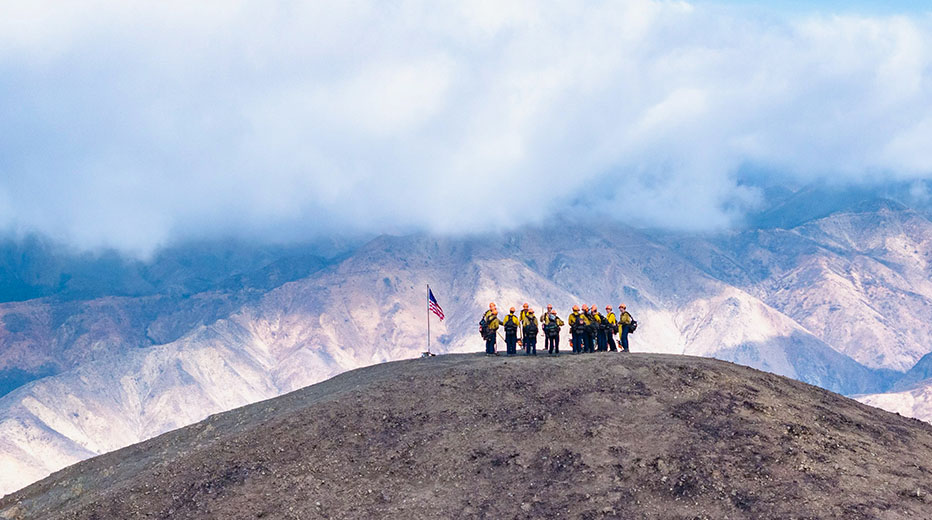
Wildland Operations
Hand Crew
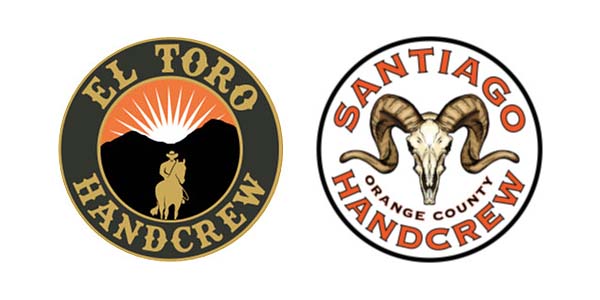
Beyond fire suppression, OCFA Handcrews are extensively utilized for fuel reduction projects, prescribed fire operations, and all-hazard assignments. They also serve as a developmental platform for training and leadership growth, preparing firefighters for future overhead positions within the wildland program. Their expertise and versatility provide essential support to OCFA’s Wildland Operations, enhancing the agency’s capacity to meet both emergency response and proactive vegetation management needs.
Organization
OCFA Handcrews operate under the Wildland Operations Battalion, overseen by the Division Chief of Special Operations.
The OCFA manages two Type 1 Dividable Handcrews: Crew 1 – Santiago Handcrew and Crew 2 – El Toro Handcrew. Each crew is staffed with 20 Handcrew Firefighters (HCFFs), providing a highly trained workforce capable of sustained wildland fire suppression and all-risk incident response.
Each crew is supervised by a dedicated overhead structure, which may be organized as either:
- One Superintendent, two Assistant Superintendents, and two Squad Bosses, or
- One Superintendent, one Assistant Superintendent, and three Squad Bosses, depending on operational needs and staffing allocations.
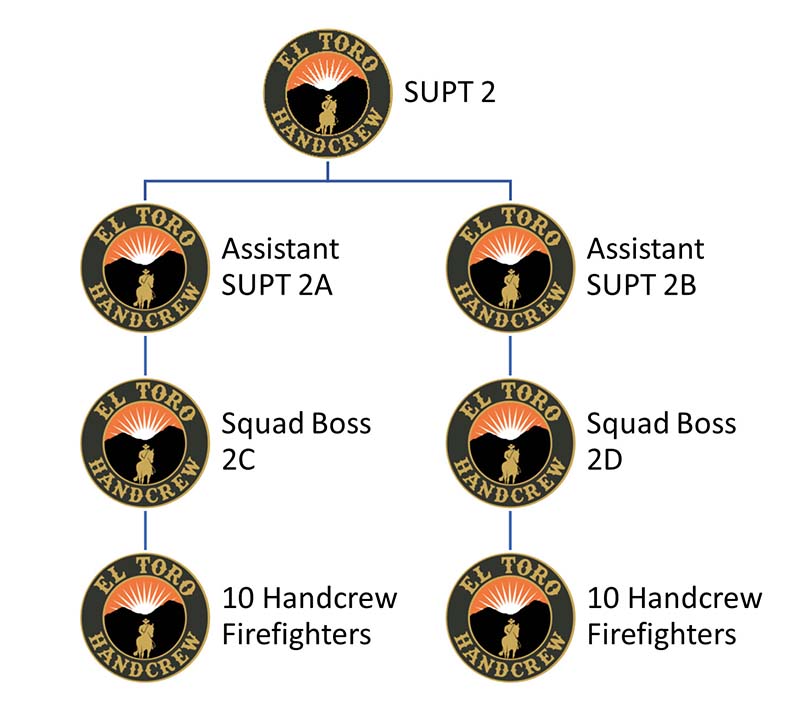
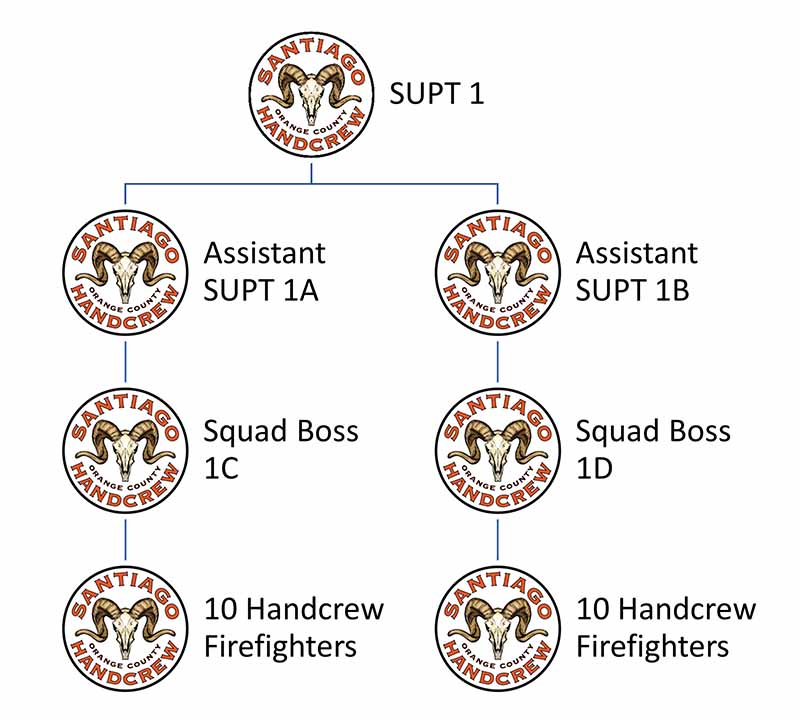
Additionally, two full-time HCFFs are permanently assigned to the OCFA’s two bulldozers, serving as dozer swampers to support heavy equipment operations during wildland incidents and fuel modification projects.
Beyond fire suppression, OCFA Handcrews are extensively utilized for fuel reduction projects, prescribed fire operations, and all-hazard assignments. They also serve as a developmental platform for training and leadership growth, preparing firefighters for future overhead positions within the wildland program. Their expertise and versatility provide essential support to OCFA’s Wildland Operations, enhancing the agency’s capacity to meet both emergency response and proactive vegetation management needs.
Job Duties
The primary mission of OCFA’s Hand Crew Firefighters (HCFFs) is hazardous fuels reduction and wildland fire suppression. These crews are a critical component of the agency’s Wildland Operations program, working proactively to reduce wildfire risk through vegetation management while remaining fully deployable for local, statewide, and national fire incidents.
In addition to fire suppression, HCFFs are responsible for a broad range of tasks that support the operational readiness and functionality of the program. These include the construction and maintenance of firelines, trails, and access roads; the operation and upkeep of chainsaws and hand tools; and the repair and maintenance of vehicles and power equipment. HCFFs also perform camp and facility upkeep to ensure a state of constant readiness.
Beyond their core mission, HCFFs provide valuable support to other OCFA divisions and programs. They assist with centralized wildland training, prepare and staff OCFA’s recruit academies, and offer logistical and workforce support to our many Sections and Programs. This integration across multiple functions exposes crew members to different aspects of fire service operations and enhances their overall skill set.
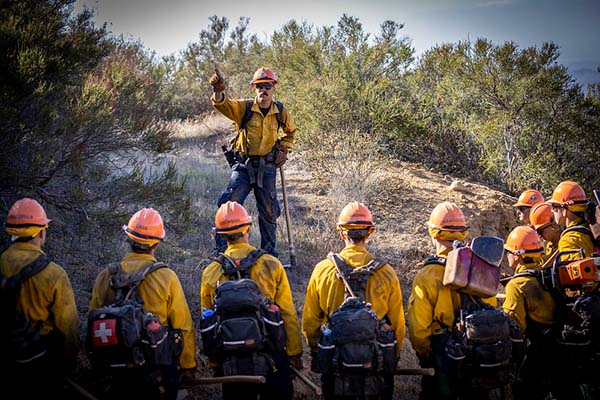
Typical Workday
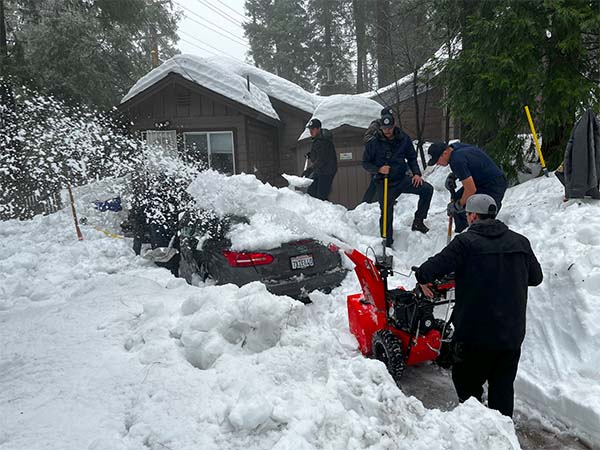
A typical workday for HCFFs follows a structured routine that emphasizes preparedness, training, and teamwork. Crews begin with station and camp maintenance, vehicle and equipment checks, and daily safety briefings. Physical fitness training is incorporated to maintain the high level of endurance required for wildland firefighting. Project work follows, ranging from fuel reduction in the field to equipment maintenance and training facility preparation at camp.
During wildfire season, HCFFs must be prepared for rapid deployment to wildland fires or extended assignments under California’s mutual aid system. On incident assignments, crews engage in fireline construction, chainsaw operations, firing operations, mop-up, and rehabilitation work in rugged, remote terrain. Crew members also rotate through lookout assignments and other safety-critical roles to maintain situational awareness and communication with overhead supervision.
Through these combined experiences, HCFFs develop a versatile skill set that builds a strong foundation for future leadership roles within wildland firefighting and the fire service at large. The program not only provides hands-on fireline experience but also offers exposure to training, EMS, and specialized rescue operations, creating a pathway for advancement within OCFA’s all-hazard response framework.
For more information or to view the comprehensive classification specification for Hand Crew Firefighter, please visit the job specification.
Schedule
OCFA handcrews work a 10-hour day shift (0700–1700) on a modified 4/10 schedule. However, due to the dynamic nature of wildland fire operations, crew members are expected to remain highly flexible and available beyond their regular work schedule.
Crews are frequently called back during off-duty hours for in-county incidents, out-of-county fire assignments, and station coverage needs. During peak fire season, it is common for crews to experience extended staffing hours for initial attack coverage, with shifts that may transition into 24-hour coverage during periods of extreme fire danger.
Fire assignments often require extended deployments, with crews regularly mobilized for assignments lasting 14 days or more, both within Orange County and throughout the state under California’s mutual aid system. These assignments include arduous conditions, remote locations, and minimal logistical support, demanding a high level of fitness, endurance, and commitment from all personnel.
It is essential for applicants to understand that this is not a standard 40-hour-per-week position. If you cannot commit to being available for emergency recall, extended shifts, and statewide fire assignments during the fire season, and demanding a high level of fitness, this job is not for you. The handcrew program requires dedication, adaptability, and a willingness to serve when called upon, often with little notice.
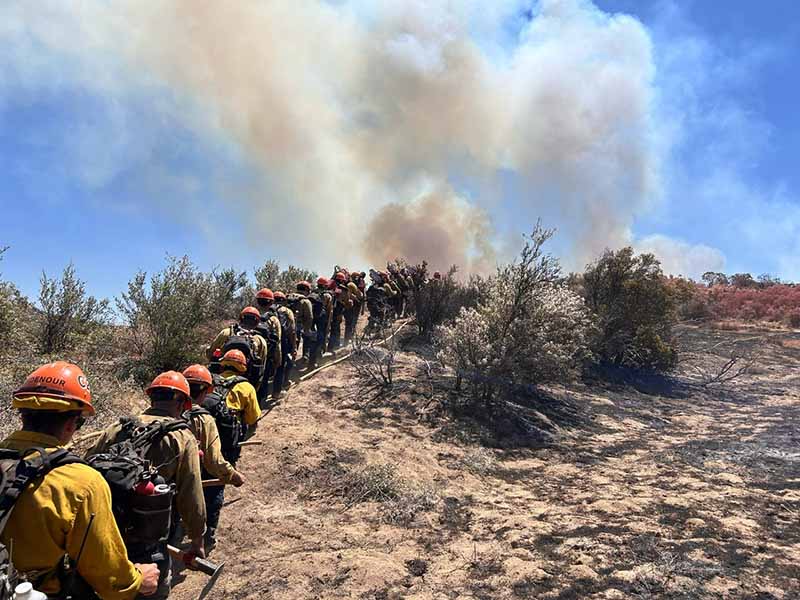
Career Development
Career development is a core objective of the OCFA Handcrew Program. Our goal is to provide crew members with the experience, education, and qualifications necessary to advance as wildland firefighters and prepare them for future roles within the fire service. As members gain experience and meet performance benchmarks, they may be appointed to the position of Senior Firefighter, serving as informal leaders and mentors within the crew.
We place a strong emphasis on training, operational experience, and professional development to help HCFFs pursue careers as firefighters with OCFA or other municipal fire agencies. To support this progression, our program offers participation in the Firefighter Mentorship Program, pairing crew members one-on-one with some of the agency’s most progressive and high-performing firefighters. This mentorship provides individualized guidance on career planning, testing preparation, and professional growth.
In addition, HCFFs have opportunities to participate in station visits and ride-a-longs with OCFA engine and truck companies. These experiences allow crew members to:
- Immerse themselves in firehouse culture
- Gain exposure to EMS operations and structural firefighting
- Observe and learn the roles, responsibilities, and expectations of probationary firefighters on the floor
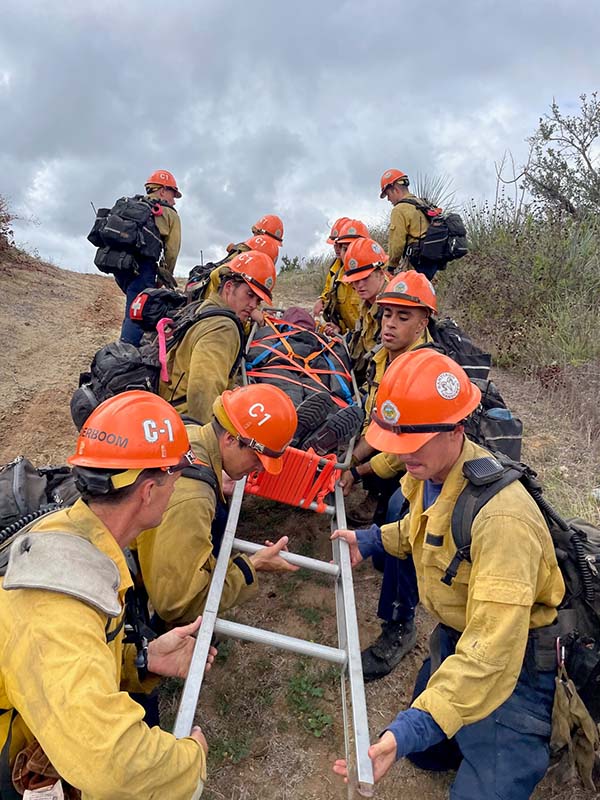
Certifications and Qualifications
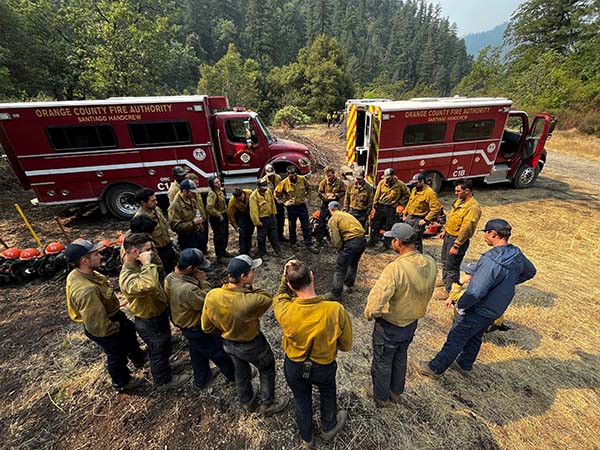
While assigned to the handcrew program, HCFFs work toward building their wildland and all-risk qualifications, which commonly include:
- FFT1 (Firefighter Type 1) – advancing beyond entry-level FFT2
- S-212 (Wildland Fire Chainsaws) – training and certification in saw operations
- S-131 (Advanced Firefighter Leadership) – leadership skills for wildland operations
- Basic ICS/NIMS certifications (ICS-100, ICS-200, IS-700, IS-800)
- Exposure to S-290 (Intermediate Fire Behavior) and other NWCG coursework as part of progression
This combination of formal training, hands-on fireline experience, and structured mentorship equips HCFFs with the skills and certifications needed to advance in their fire service careers.
Career Pathways
Community Risk Reduction & Pre-Fire Management
These projects play a critical role in protecting our communities by reducing hazardous fuels in wildland-urban interface areas, removing invasive plant species, maintaining and improving fuel breaks, and ensuring fire roads remain accessible for emergency response. Crews frequently collaborate with local jurisdictions, utility companies, landowners, and partner agencies, creating regional solutions to reduce wildfire risk.
Project work includes brushing, mowing, chipping, and tree removal, combining wildfire prevention with hands-on operational training. Each project not only strengthens community safety but also serves as real-world preparation for wildland fire assignments, allowing handcrew members to sharpen their skills in vegetation management, equipment operation, and teamwork under field conditions.
Joining the OCFA handcrews means making a tangible difference in fire prevention while gaining the experience, training, and qualifications needed to advance in your fire service career.
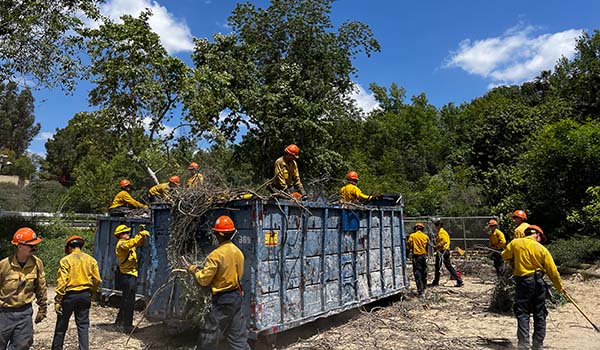
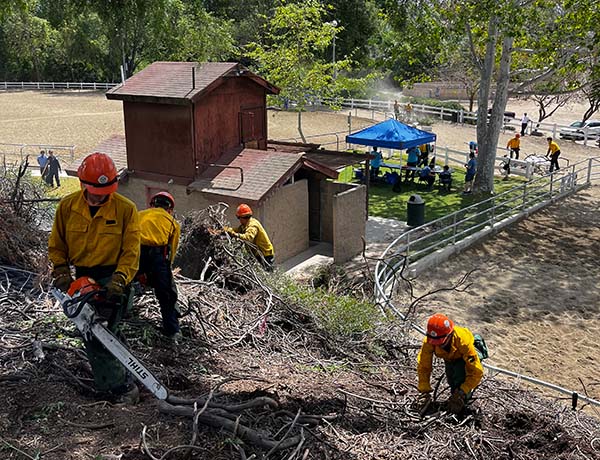
Firefighting Operations
OCFA handcrews maintain seven-day coverage for initial attack fires within OCFA’s jurisdiction, ensuring rapid response capability to emerging wildland incidents. As a CalFire contract county, OCFA crews are also available to respond to fires throughout the State of California under the state mutual aid system.
When assigned to fires, handcrews are expected to operate safely and effectively under challenging and adverse conditions, including extended operational periods, steep and rugged terrain, heavy physical exertion, smoke-filled environments, and extreme temperatures.
Designed to be highly mobile and self-sufficient, OCFA handcrews require minimal logistical support, allowing them to function independently in remote areas for extended durations.
Typical HCFF duties on fires include, but are not limited to:
- Direct and indirect fireline construction using hand tools and chainsaws
- Falling operations for hazardous trees and fuel reduction
- Firing operations, including burnout and backfiring to control fire spread
- Mop-up operations to extinguish residual heat and secure the fire perimeter
- Fire suppression repair, restoring control lines and mitigating environmental impacts post-containment
In addition to operational experience, fire assignments provide critical opportunities for career development. HCFFs gain exposure to leadership roles, complete position task books (e.g., FFT1), and receive on-the-job training from qualified overhead, building the skills and certifications necessary to advance in wildland firefighting and beyond. These experiences develop leadership, decision-making, and operational confidence, preparing handcrew members for future roles within OCFA or other fire service agencies.
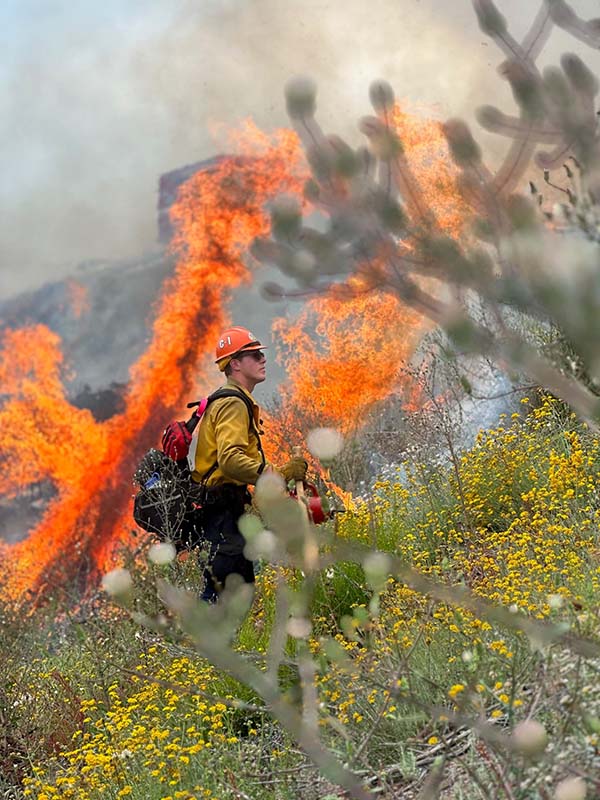
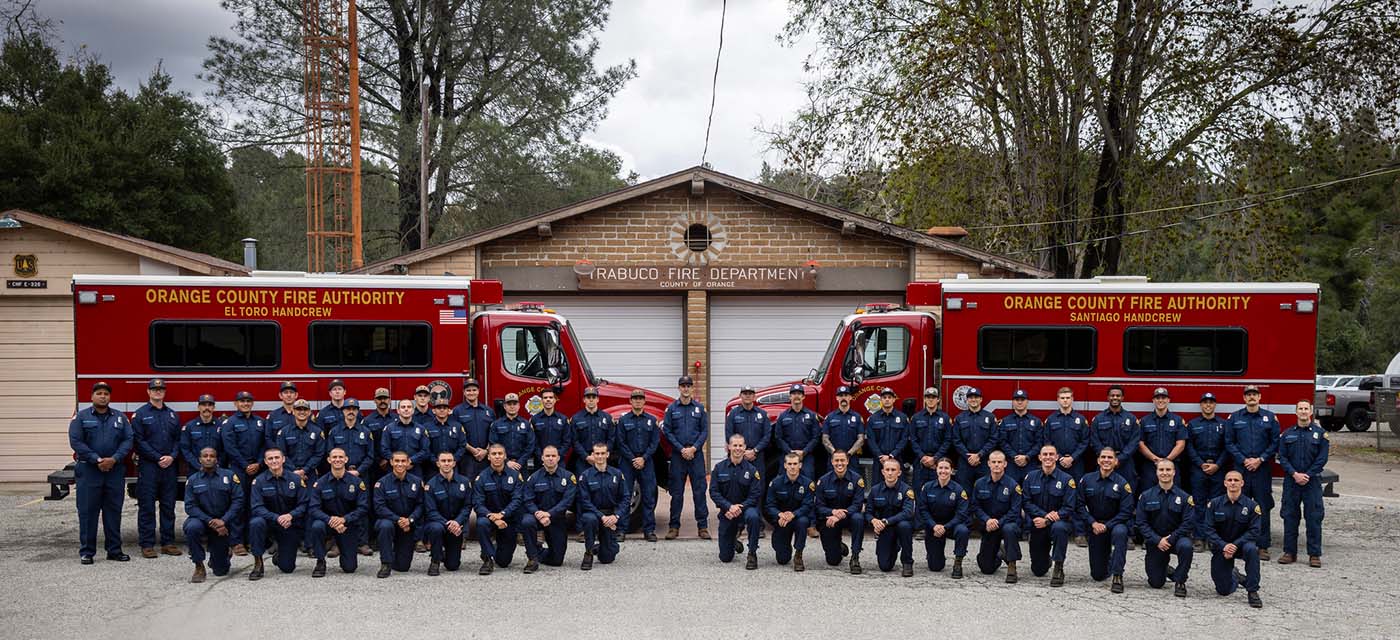
Heavy Equipment
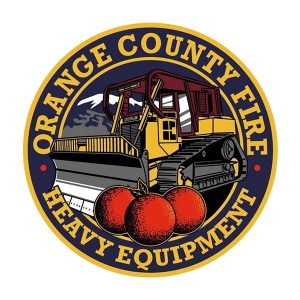
Organization
OCFA handcrews are actively engaged in ongoing wildfire mitigation projects across Orange County, working in partnership with the OCFA Wildland Resource Planner and the Pre-Fire Management Section.
These projects play a critical role in protecting our communities by reducing hazardous fuels in wildland-urban interface areas, removing invasive plant species, maintaining and improving fuel breaks, and ensuring fire roads remain accessible for emergency response. Crews frequently collaborate with local jurisdictions, utility companies, landowners, and partner agencies, creating regional solutions to reduce wildfire risk.
Project work includes brushing, mowing, chipping, and tree removal, combining wildfire prevention with hands-on operational training. Each project not only strengthens community safety but also serves as real-world preparation for wildland fire assignments, allowing handcrew members to sharpen their skills in vegetation management, equipment operation, and teamwork under field conditions.
Joining the OCFA handcrews means making a tangible difference in fire prevention while gaining the experience, training, and qualifications needed to advance in your fire service career.
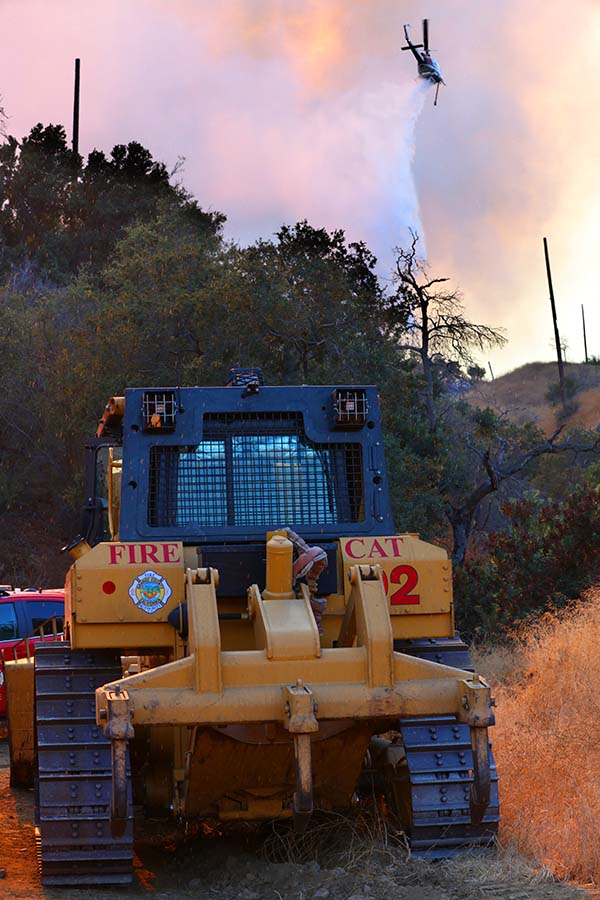
Job Duties
The OCFA Heavy Equipment Section plays a critical role in all-risk emergency response and is prepared to respond at any time to incidents that require the use of heavy machinery. Dozers are a vital resource in containing large-scale vegetation fires by constructing control lines and improving access in difficult terrain. When not actively engaged in emergency incidents, crews focus on hazardous fuels reduction and maintaining access roads for future response operations. The section also completes project work that requires heavy equipment, such as building pads for Air Operations dip tanks, station improvement projects, and other infrastructure support.
In addition to operational duties, the Heavy Equipment Section is actively involved in training throughout the year, supporting both internal and external training events. This includes participation in state and federal programs such as Heavy Equipment Interagency Safety Training (HEIST) at Camp Pendleton and the Region 5 Dozer Academy, ensuring operators remain skilled and prepared for a wide range of missions.
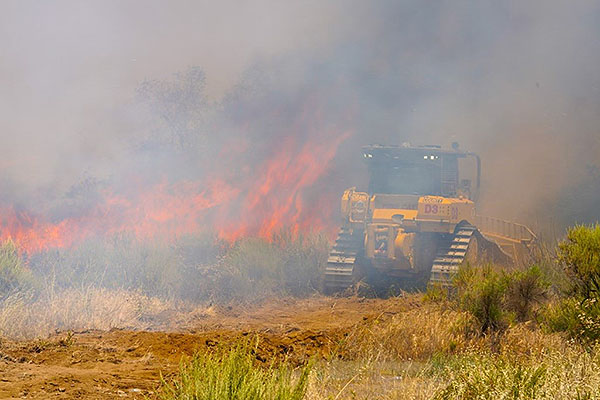
Schedule
Apprentice Program
The OCFA Heavy Equipment Section offers a comprehensive HFEO Apprentice Program designed to develop the next generation of Heavy Fire Equipment Operators. This three-year mentorship program is open to current OCFA Hand Crew Firefighters (HCFFs), Firefighters, and Engineers who aspire to advance into HFEO journeyman positions.
The program is structured into three phases of progressive training, providing hands-on experience and technical instruction in heavy equipment operations. Apprentices receive Class A commercial driving training and attend specialized Heavy Fire Equipment Academies, including the CalFire HFEO Academy, where they gain the skills necessary to safely and effectively operate dozers and other heavy machinery in emergency and project environments.
Upon successful completion of the program and promotion to journeyman status, candidates become eligible to apply for full-time HFEO positions as vacancies arise. Additionally, journeyman-level HFEOs may serve as qualified relief operators on incidents while continuing to work in their current classification within the authority.
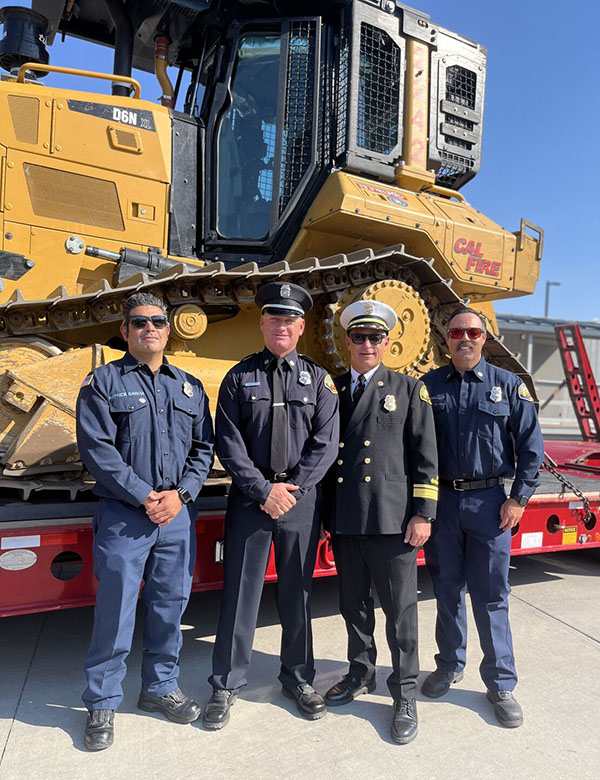
Community Risk Reduction & Pre-Fire Management
OCFA Heavy Equipment conducts ongoing project work within the county in coordination with the OCFA Wildland Resource Planner and the Pre-Fire Management Section. Project work is completed to reduce fire risk in interface areas, reduce invasive plant species, maintain fuel breaks, and maintain fire roads. Projects may be mutually beneficial to or contracted by cooperating agencies, landowners, and utility companies. These projects most often involve brushing, mowing, and grading.
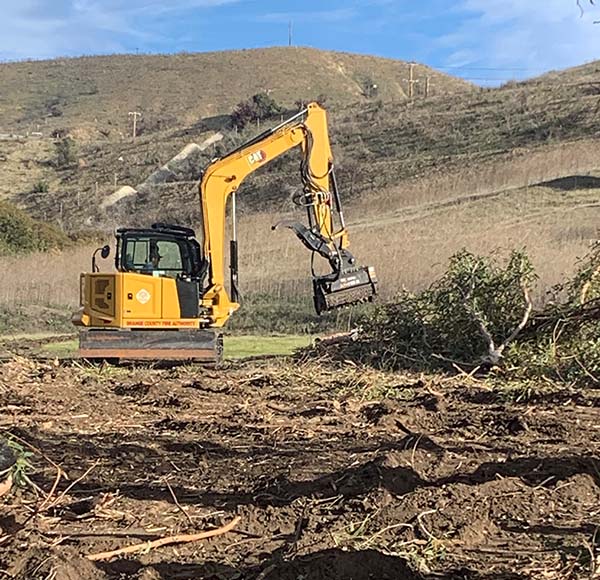
Firefighting Operations
While assigned to fires, crews are expected to operate safely in adverse conditions including long hours, steep terrain, and extreme temperatures. Heavy Equipment Crews are self-sufficient by design, requiring little logistical support.
